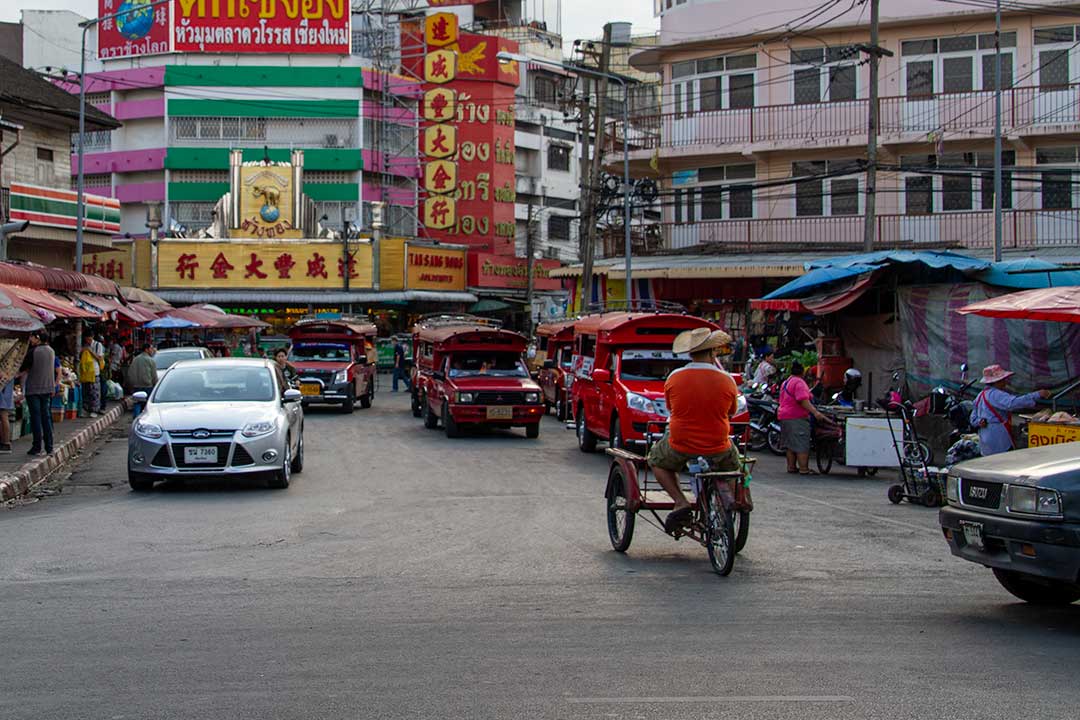Explore the streets of Chiang Mai Chinatown, and discover its rich history
You find Chiang Mai Chinatown on the banks of the muddy Ping river, a little outside the old city walls.
Chiang Mai Chinatown is a fascinating hub of Thai-Chinese culture, attracting visitors from all over the world. But what is the history behind the Chinese presence in this city?
Chinese merchants have had a long-standing presence in Thailand, primarily around the old capital of Ayutthaya.
This changed with the opening of China’s borders in 1860 through the Treaty of Peking, then many Chinese began to travel to Siam (as Thailand was then called), first to Bangkok and the east coast cities.
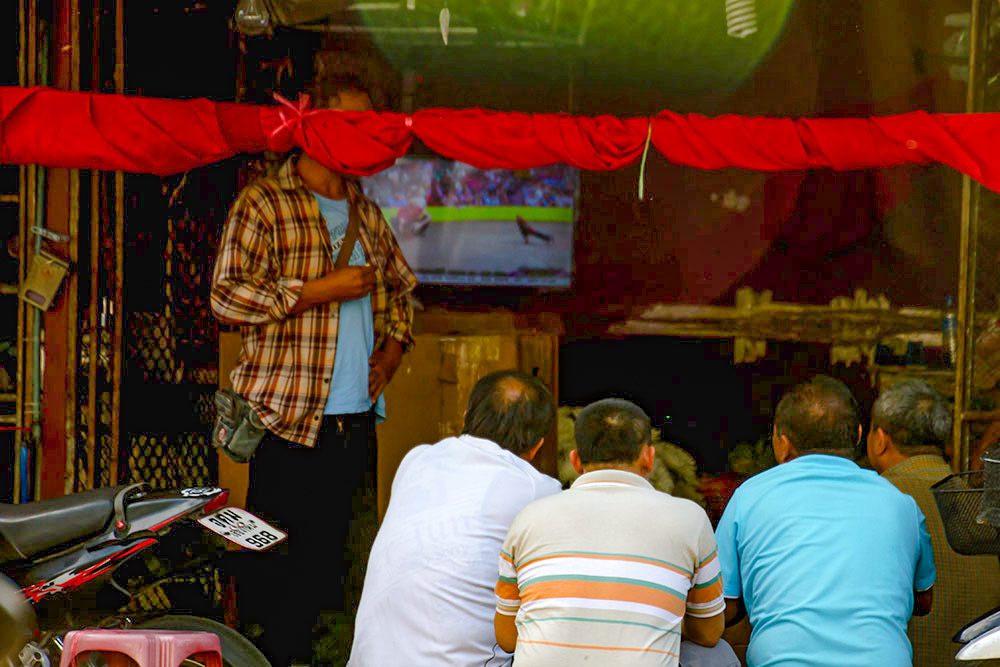
But, as competition among Chinese merchants intensified in these areas, they began to spread out to other parts of the country, including Chiang Mai.
The Chinese were skilled businessmen and quickly established control over the retail trade, money lending, and commercial river traffic in Chiang Mai.
In the late 19th century, they even entered the business of tax collection by bribing the local government’s powerful nobles.
However, a rebellion in 1899 put an end to this practice due to growing hostility towards Chinese tax collectors.
Today, Chinese merchants may not have the same level of control over the street-level retail economy, but they still dominate certain areas of Chiang Mai, especially the Warorot market and Muang Mai market, which are both part of Chiang Mai Chinatown.
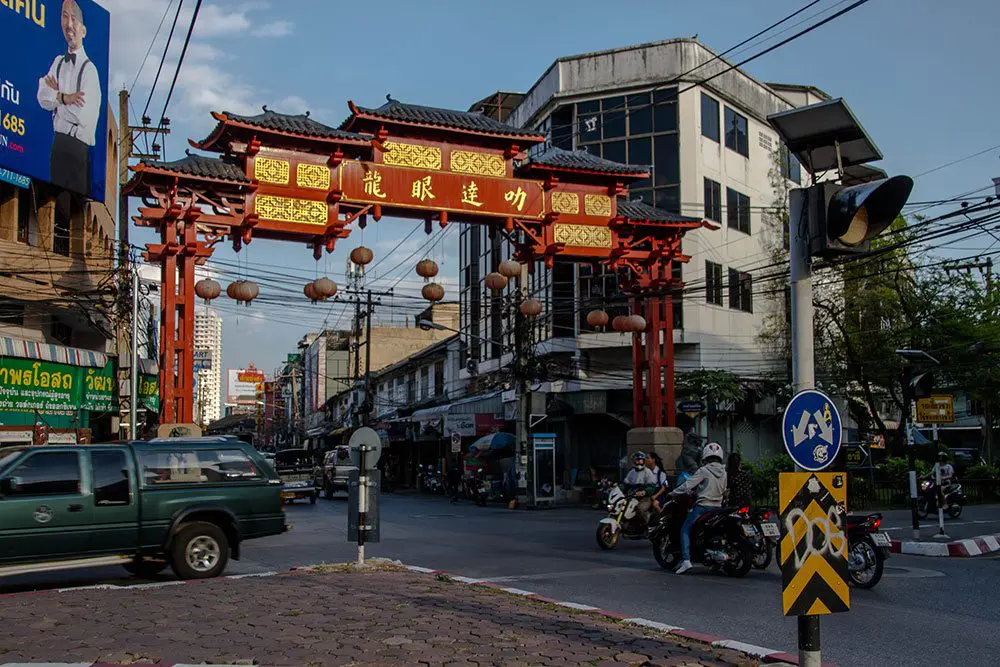
Walking the Streets of Chiang Mai China town
Embarking on a walking tour of Chiang Mai’s Chinatown is a captivating experience that will transport you back to the era when Chinese immigrants first settled in the region.
As you weave through the narrow alleyways and bustling streets, you will be immersed in a rich tapestry of culture and history unique to this part of Thailand.
In addition, this walking tour offers a glimpse into the Chinese community’s daily lives and a chance to explore some of the area’s most fascinating landmarks and attractions.

Chiang Moi Road: A Multicultural Melange of Old and New
The first stop on our walking tour is Chiang Moi road, a thoroughfare that epitomizes the fusion of Chinese and Thai cultures.

Here, modern buildings and trendy cafes coexist with traditional Chinese temples and shophouses, creating a multicultural melange that is both fascinating and beautiful.

Be sure to take your time to explore the unique architecture and intricate details of the buildings and sample some of the local street food that can be found at every turn.
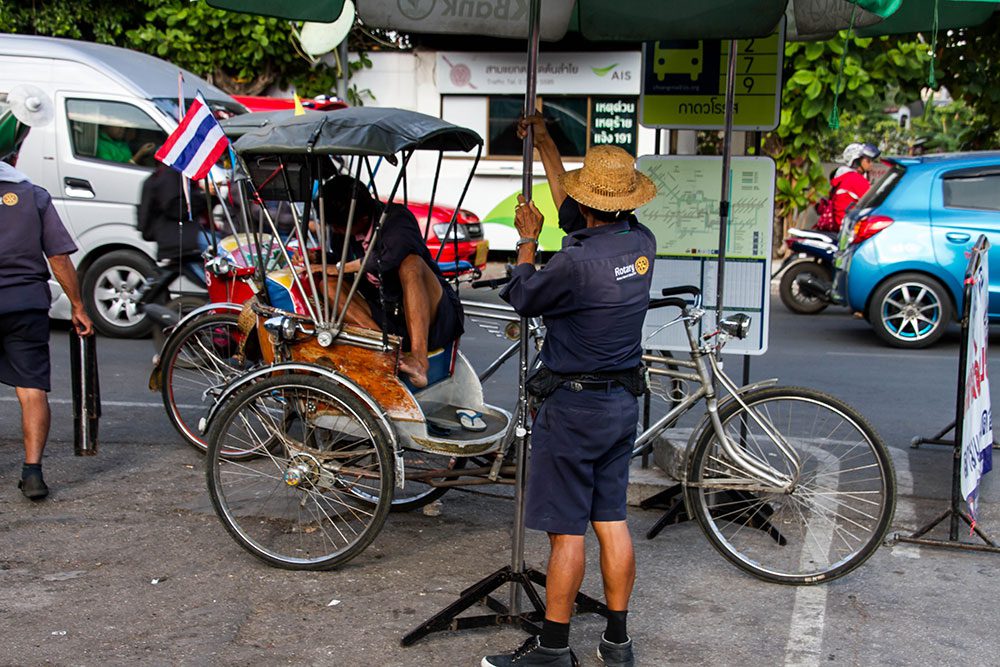
Muang Mai Market: A Bustling Bazaar of Exotic Foods and Artisanal Crafts
A trip to Chiang Mai is not complete before you have been at the Muang Mai Market. This bustling bazaar is home to some of the region’s most exotic foods and artisanal crafts.

Here, you can browse a dizzying array of fresh fruits, vegetables, spices, and herbs and sample local delicacies such as mango sticky rice, coconut milk ice cream, and fried insects.
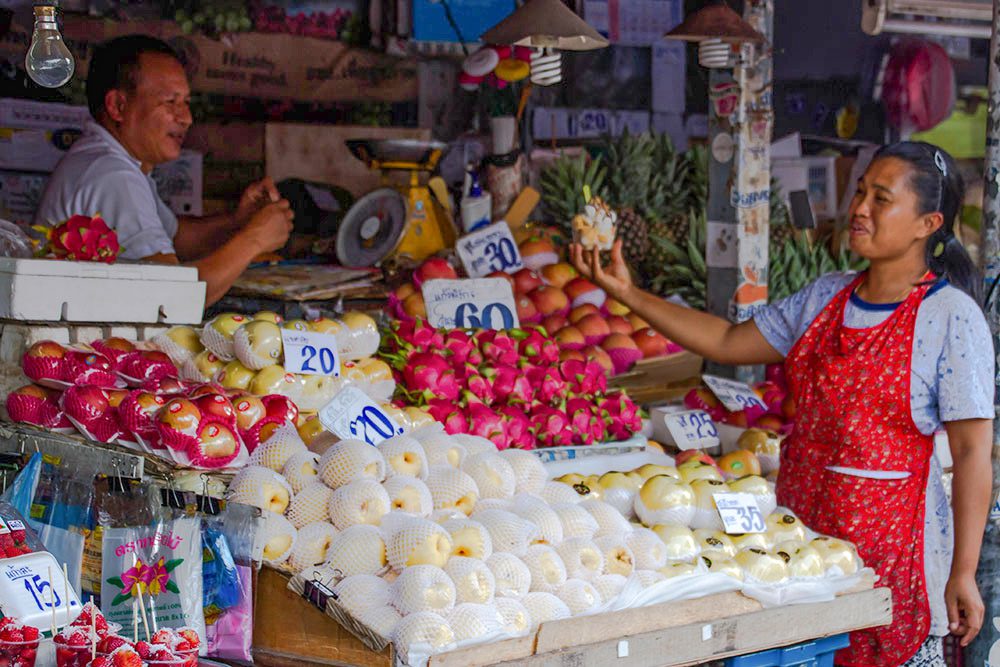
The market is also great for picking up souvenirs and handicrafts, including traditional Thai silk, woodcarvings, and ceramic
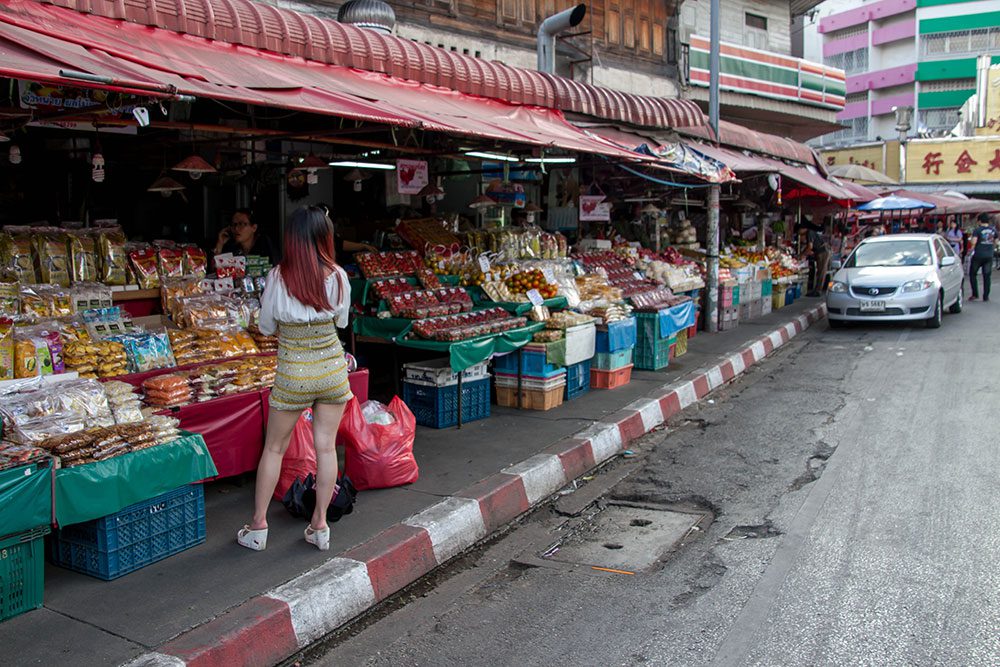
Warorot Market: A Treasure Trove of Traditional Thai-Chinese Wares and Souvenirs
Warorot Market is another must-visit destination on our walking tour, a treasure trove of traditional Thai-Chinese wares and souvenirs that will delight any shopper.

Here, you can find everything from ornate lanterns and intricate wood carvings to handmade jewelry and silk scarves, all at incredibly reasonable prices.
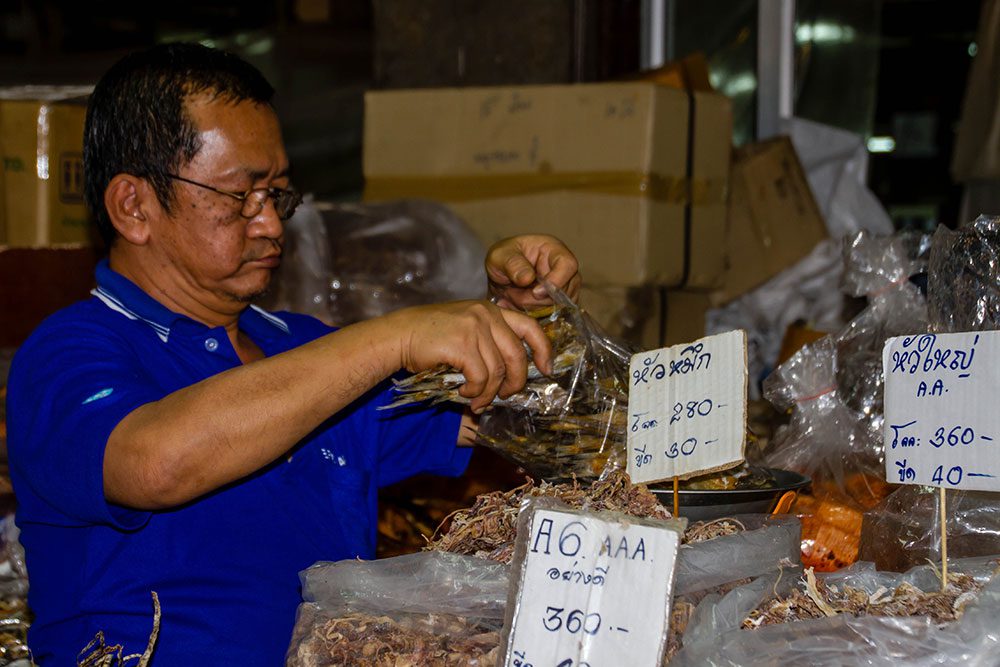
The market is also great for sampling local snacks and beverages, including fresh fruit juices and coconut water.

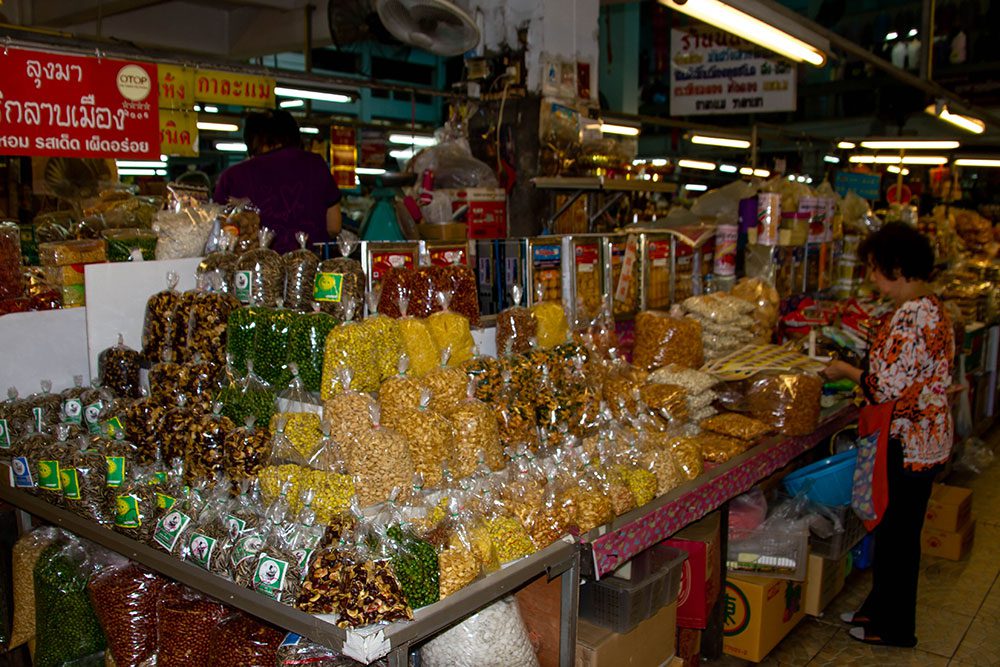
Warrorot Road Cut Flower Market:
A Colorful Array of Locally Grown Blooms and Regional Export Hub

The bustling Warrorot Road cut flower market in Chiang Mai offers a captivating experience, brimming with a diverse selection of flowers grown in the mountains north of the city.

As you meander through the narrow aisles, you’ll encounter numerous flower types, such as roses, orchids, lilies, and chrysanthemums, beautifully displayed in an organized fashion.

This thriving marketplace serves as a gathering point for local growers and sellers.

It is also the regional export hub, shipping exquisite cut flowers to Bangkok and beyond, enhancing its prominence in the region.

Mae Ping River: A Serene and Scenic Respite from the Hustle and Bustle of the City
The Mae Ping River is a serene and scenic respite from the hustle and bustle of the city.
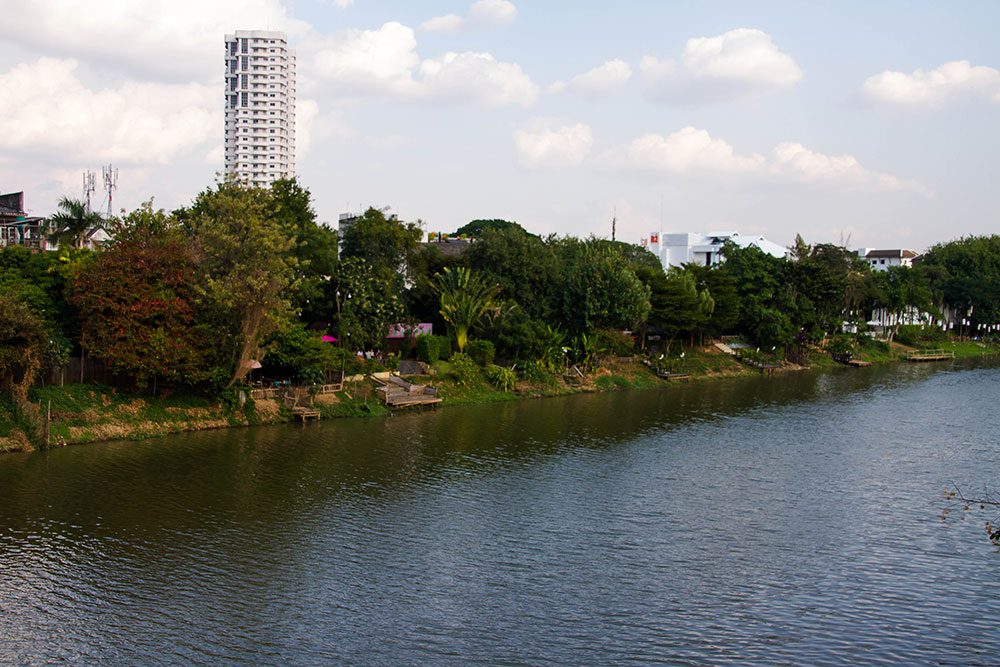
Take a stroll along the riverbank, relax on a bench and watch the world go by, or even take a boat ride to explore the river further.
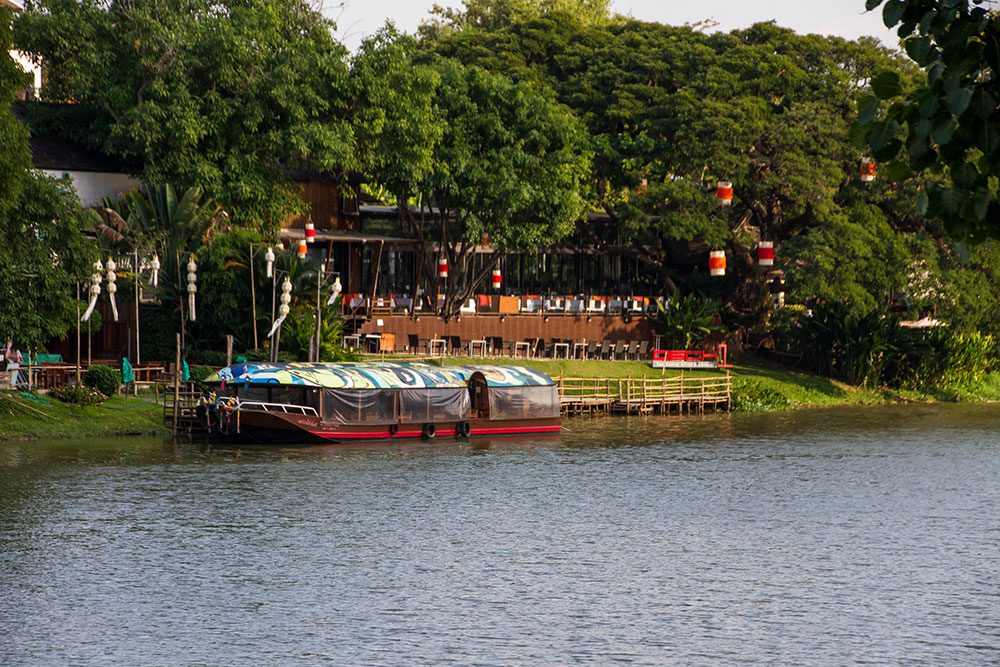
On the opposite side of the river you have upscale riverside restaurants. The boat on the picture in the middle take you on a dinner cruise on the river.

Visit a traditional Chinese medicine shop
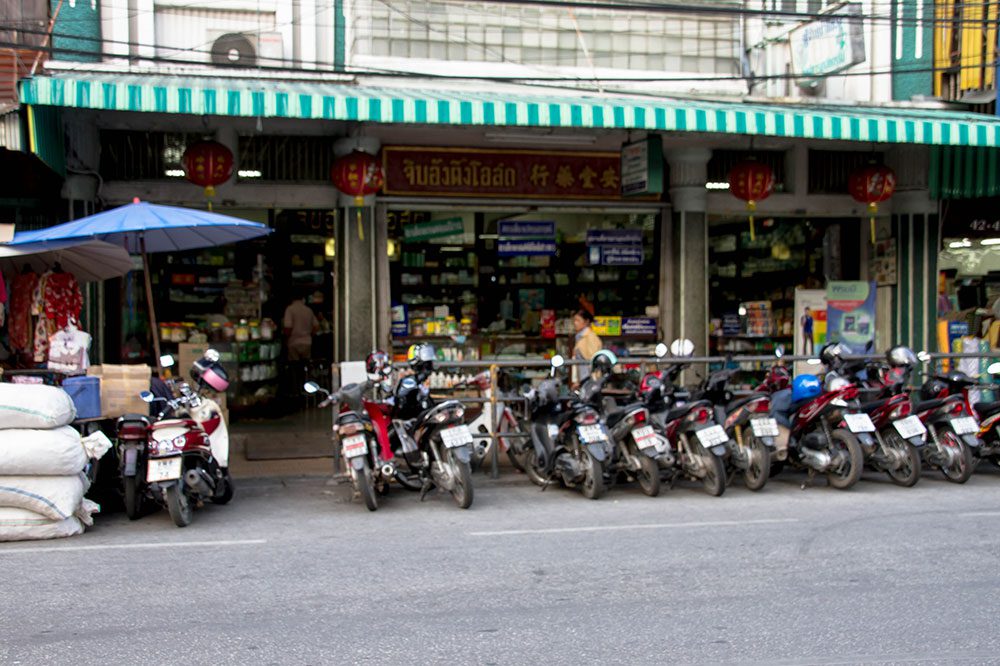
Above you see a Chinese herbal medicine shop. The shop is almost 100 years old and is owned by the same family.
From Monday to Friday 10 am to 14 pm, there is a Chinese herbalist in store.
So if you have an issue with your health just contact him.
He will look at your tongue, take your pulse and ask a few questions.
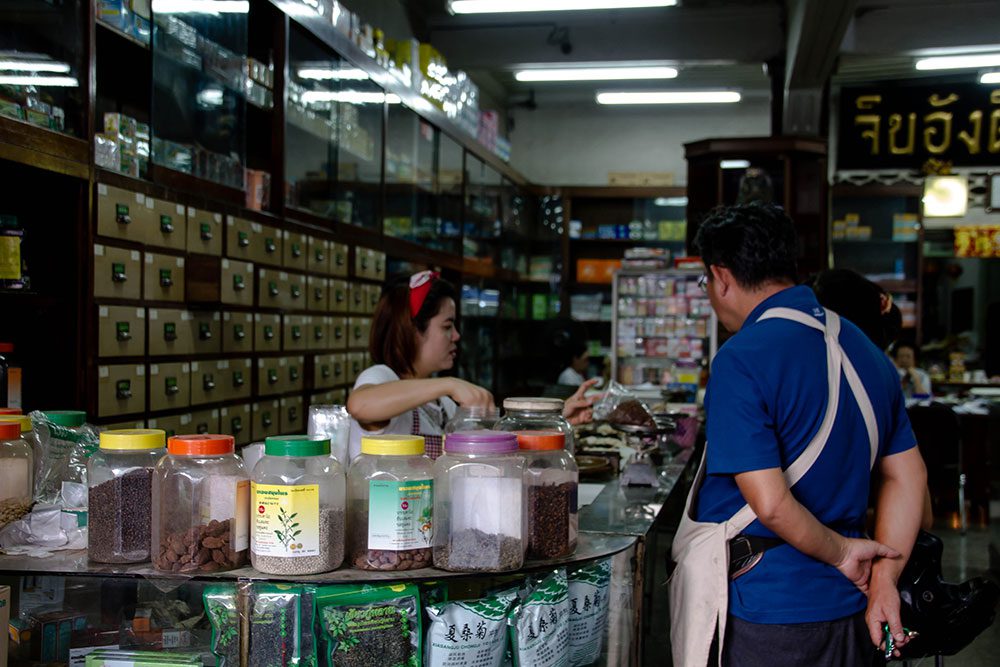
He will then write a prescription in Chinese. You then go to the counter and hand them your prescription.
While you wait a employee collects and weighs the various herbs flowering.
It will be packed in packages, it make it easy for you, one package for each dosage.
Streetfood
Chinatown is a culinary haven, offering many delicious street food options that will tantalize your taste buds.
From noodle soups and dumplings to fresh seafood and grilled meats, there is something for everyone.
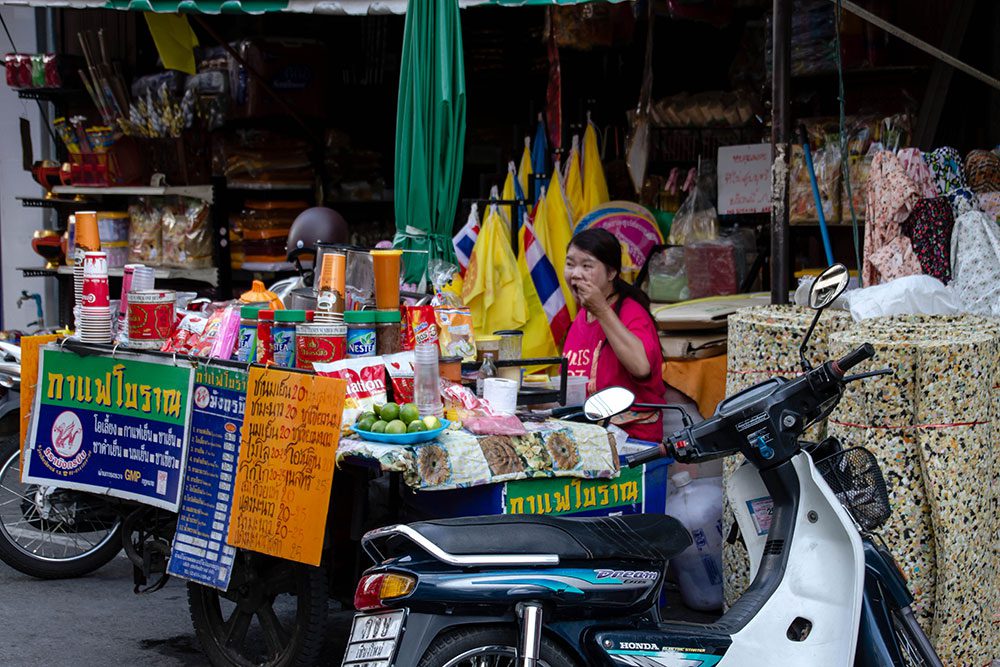
You will also also a lot of shops selling all kinds of fabrics.
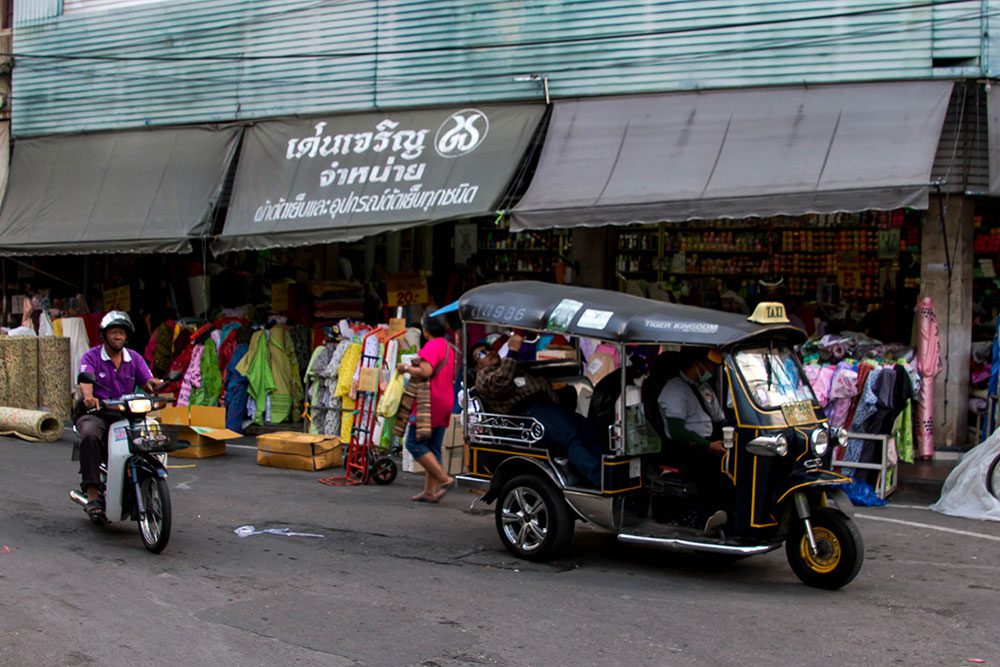
Even it is Chinatown most of those shops are owned by Thais of indian
descent
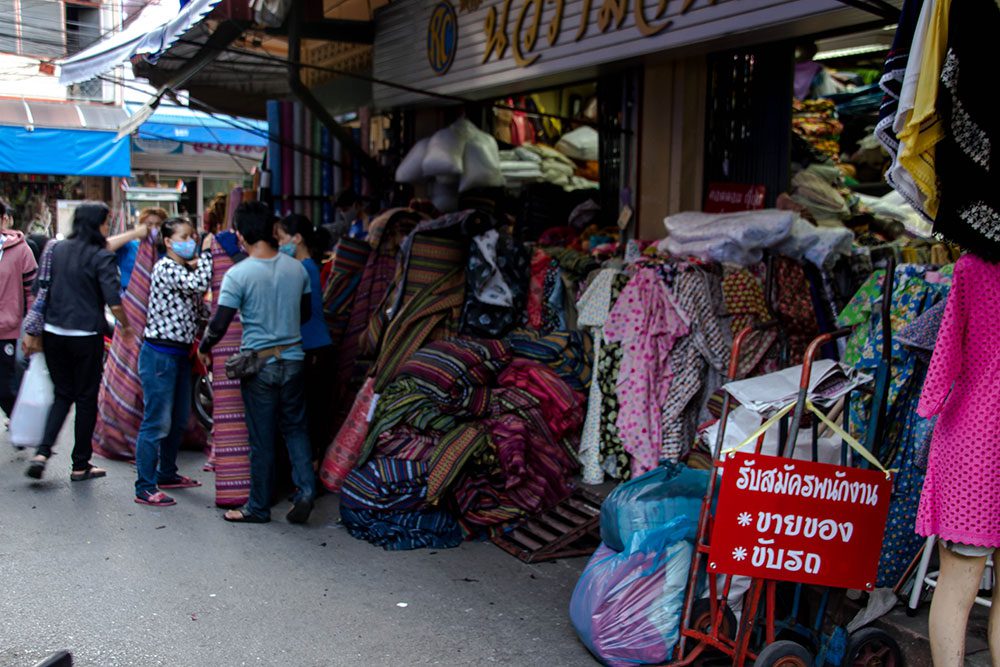
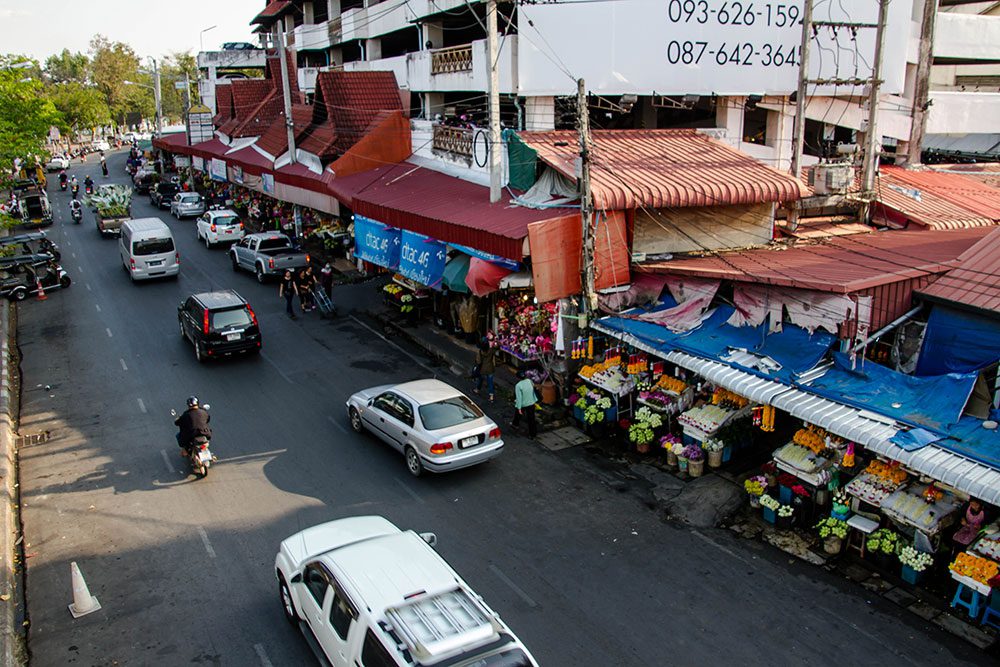
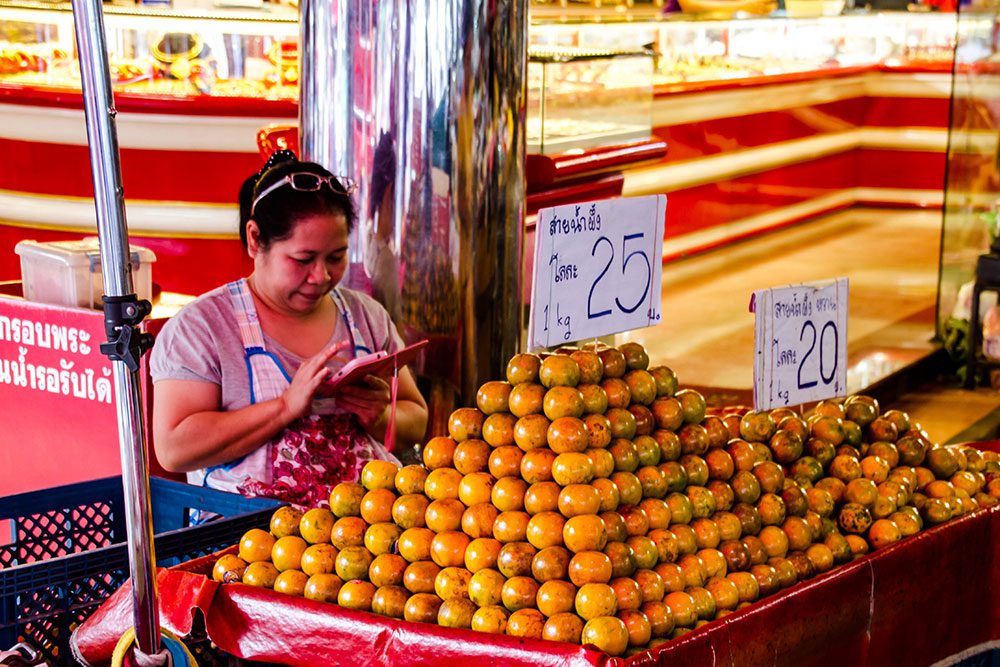
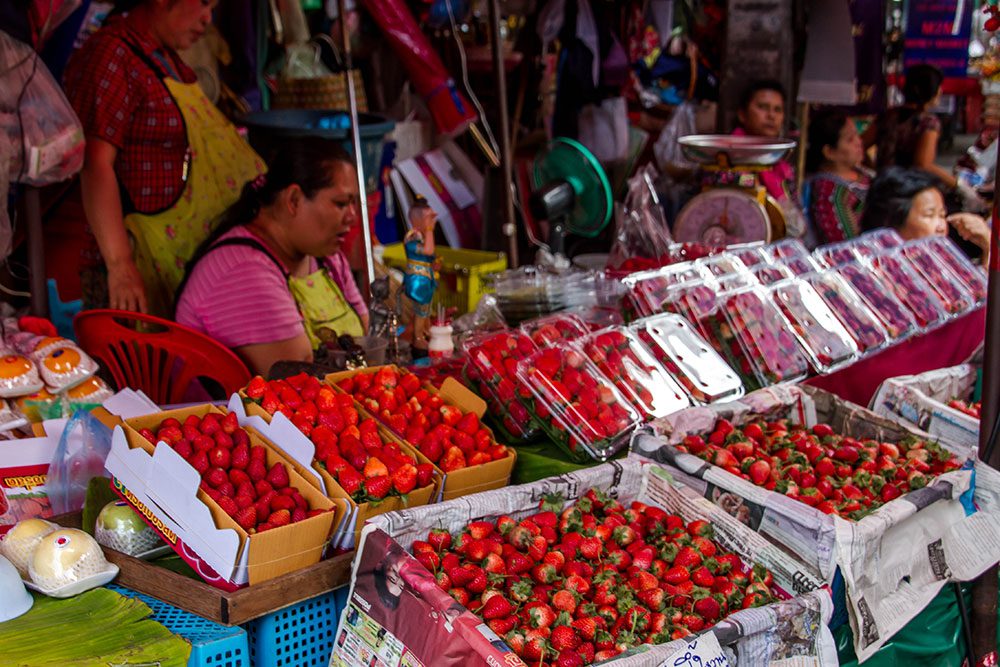
Why you should visit
Chiang Mai China town is a vibrant cultural hub that offers visitors a unique blend of Thai and Chinese traditions.
Its rich history is reflected in the landmarks, markets, and temples that make up the area; there is plenty to see and do.
So dont miss out, it is one of the “must sees” it you visit the northern capital

